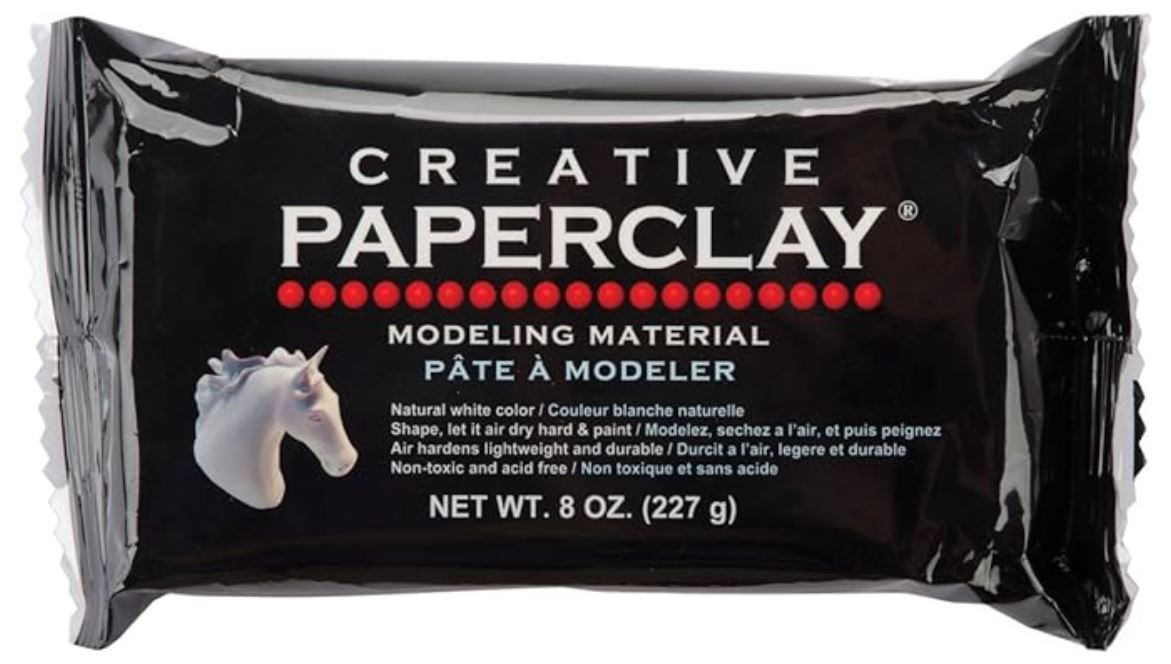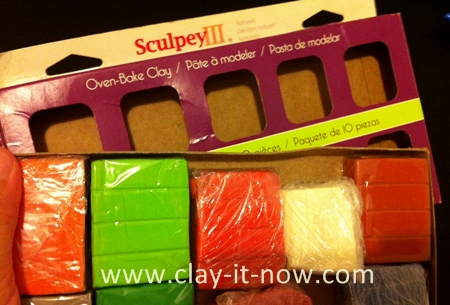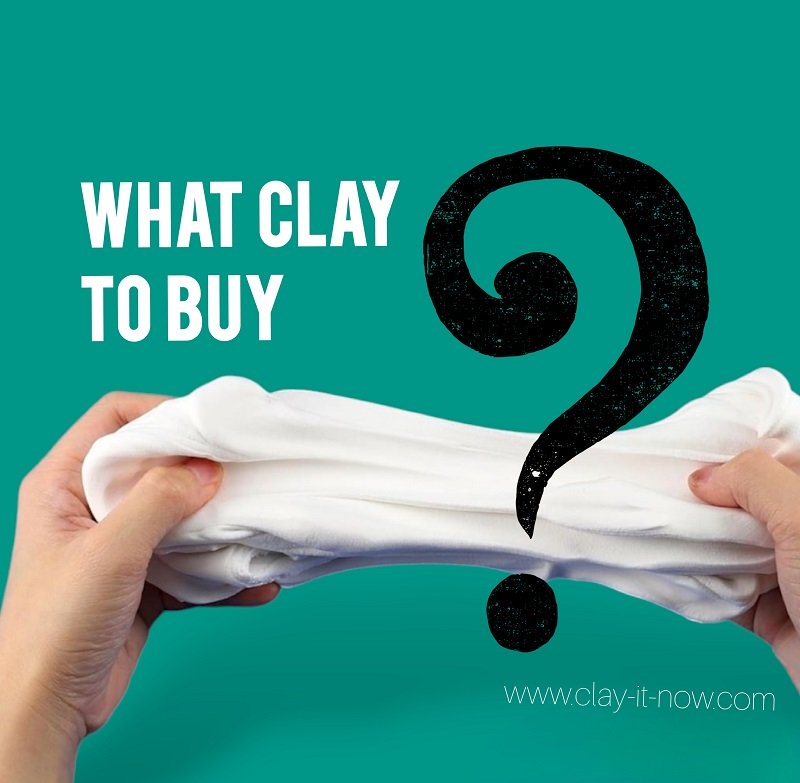What Clay to Buy?
What clay to buy?
Do you use oven baked or air dry clay? I have received many questions like this from you.
Alright! We know you can't wait to make your own clay model. And.... you need clay, don't you?
But, you may not have time or experience to make your own clay. So, you'll buy the clay, right?
I am sure you will ask yourself, what clay to buy? where to buy?
Well, before you hit the button to buy clay online or going to your local craft store, you may want to read through my review for your reference. Hope this page will answer your question about what clay to buy :)
FYI, my review was based on my own experience and opinion.
I am sure that beside of those clay mentioned in this page, there are many other types of clay in the market.
If those clay were not mentioned here, it doesn't mean those are not good. It could probably means that I have not tried them yet :)
I would be happy to try out those clay if I have a chance or if you send them to me :) I will certainly make Youtube Video with that clay :)
So, what clay to buy?
The "clay" we are referring here is not the clay minerals that naturally formed from the rock through chemical weathering.
We use clay craft such as polymer clay which required baking to make it hard and air-dry clay, a type of clay that will dry in room temperature without baking.
What is Polymer Clay?
Polymer clay is a modeling clay with polymer polyvinyl chloride (PVC) base. It will stay soft in room temperature (uncured) and hardened when baked in the oven at temperature as recommended by the manufacturer.
There is an interesting story behind this clay. It was said that the Polymer Clays were initially formulated to replace "Bakelite" which was contained flammable phenol base.
The new formula was given to a daughter of a German doll maker in 1939, Sophie as a modeling clay. She was fondly known as "Fifi".
The clay was favorable as modeling material at that time and it was marketed under "FIMO" (Fifi's Modeling compound) brand by Eberhardt Faber later on.
Another famous brand is Sculpey.
Pros & Cons of the Oven Baked Polymer Clay
Pros:
- Wide varieties of color choice from pastel to bright colors.
- Special effect like mother pearl, metallic, granite, etc.
- Permanent shape after curing.
Cons:
- Close supervision needed at all time when baking the clay (only suitable for kids above 8 years old).
- The end result may vary depends on your baking time and thickness or shape of the model.
- Need special products (compatible) for glue, surface finishing, etc.
- More expensive compared to air drying clay.
What is Air Dry Clay?
Many people referring air dry clay as a new form of clay. Even some of them make the clay sounds trendy by calling it ADC Clay.
Basically, the clay will dry out in room temperature within 24 hours or few days depends on weather in your home country, size and thickness of the model.
I did all my clay models - all sizes with my own ADC clay. I love the material so much. If you want to make your own clay you can check out my modeling clay recipes. I called my favorite recipe best homemade clay.
But if you are not sure about making your own clay, I will recommend you to buy ready-made air dry clay.
Types of air dry clay:
In summary, I can say that there are 3 types of air dry clay.
Type 1: Air dry clay that will dry hard when it's dry and comes with limited color - mostly white, grey or terracotta.
The clay transforms itself from their flexible to solid forms without putting them in the oven or kiln. This type of clay is good for sculpting, can be shaped into slab or coil forms and you can use it exactly like modelling with traditional/ natural clay and mostly called "Modelling Clay".
This type of clay is versatile - take detail well and dry super hard. But, bear in mind: it will shrink during drying process. So, depending on how you sculpt the model, it may crack.
Have you ever seen some artist making beautiful creations with air dry modelling clay, telling us it is paper clay and when you use the clay mentioned/ recommended by the artist, your model cracks here and there?
If you have that experience, than you know that you are using air dry modelling clay.
Alright! Don't be anxious if your clay cracks. You just have to patch it. Really!
Now, what clay to buy? :)
There are many type of air dry modelling clay in the market like Darwi air dry clay, Jovi, Sculpey Air Modelling, etc. But 2 famous brand that I came across is DAS air hardening modelling clay and Air dry modelling clay by Mont Marte
I make unicorn planter with air dry clay from Mont Marte and used plastic container as you can see in below video. I use thin layer of clay to cover plastic bottle and aluminum foil.
Well..the clay cracks here and there during drying process.
That's okay! I patch the cracks with fresh clay and all good.
That's true! I am fine with it because Mont Marte openly told us that the clay will shrink and may cracks. I appreciate their honesty and accept that as you can see when they make lantern project below.
Type 2: Air Dry Paper Clay
Paper clay is light-weight air-hardening clay that is best to cover armature, wrap around jars, making dolls, sculpture or clay relief/ texture.
The paper fibers bind all the clay ingredients, giving solid clay body but with paper-like feeling, with less shrinkage during drying process.
Again, what clay to buy? You may consider Creative Paper Clay. It is good for sculpting and also for wrapping the armature or glass jars and plastic bottle to make something like fairy house kind of projects.
Sometimes air dry paper clay has little boundary with paper-mache clay like Celluclay instant paper by Active. This is also favorite choice for sculpting or wrapping plastic bottle and glass jars. You may need to smooth the surface when the clay still wet with water. And, use craft sand paper after the clay dry. You may not see any cracks sculpting with this clay.
Type 3: Squishy Clay or Soft Clay.
Like all air dry clay, this soft clay doesn't need baking or firing. It will dry hard but somewhat you can still feel it softness. Some clay will even bounce when we throw it to the floor.
Because of that character, soft clay is highly recommended for small kids.
Still have doubt on what clay to buy? please continue to read through until the end.
Pros & Cons of Air Dry Clay
Pros:
- Easy to handle, suitable for all ages due to variety of clay types.
- No special products required for glue and finishing.
- Permanent shape after drying.
- Cheaper and yet look professional.
Cons:
- The clay will shrink about 5-15% after it's dry.
- Need to patch up the model when the clay cracks.
- Need longer time for clay to dry especially for big clay project.
So, what clay to buy?
Here is my recommendation:
- For soft, light and squishy air dry clay : Crayola, Amaco cloud clay or other type soft clay like those from Korea. The two brands mentioned are highly recommended for small kids. It's easy to handle the clay, no-mess and non-toxic. Crayola Model Clay Class pack in white and Crayola class pack Assorted color are ideal for teaching clay art to a group of kids from 2 years old and above. However, based on my own experience, I would say Crayola squishy clay is more brittle than the Cloud clay. Cloud clay will stretch better and dry harder than the Crayola. But again, both is good for kids.
- The best air dry clay for making flower is Hearty Clay Super light-weight from Japan or Martha Stewart clay.
- If you are looking for air dry clay that will dry hard with texture like polymer clay, Makin's air dry clay is my favorite. It has similar quality with oven-baked polymer clay after it's dry completely but easier to handle.
- As for oven-baked clay, you might consider buying Sculpey or FIMO clay.

- If you need clay to wrap around jar to make mushroom fairy houses, I would think that creative paper clay is the best so far based on my experience. I don't see any cracks during drying times. Less shrinkage? Probably. Have a go with it and experience it by yourself.
- Some of you have asked me what clay to buy if you want it air dry or curing in microwave. Well, If you are looking for clay that will dry in room temperature or hardened in microwave oven, FIMO Air Light would be your choice. This type of clay is good because when you change your design half-way through the clay still wet and when you are sure about it, put the clay model in microwave oven and it will hardened in minutes.
We hope that you've found the answer about what clay to buy in this page.
| Home | Clay Recipes | ^Top of Page |
Please LIKE, SHARE and SUBSCRIBE to support my channel.
Share your craft
Do you make your craft? Share it!



